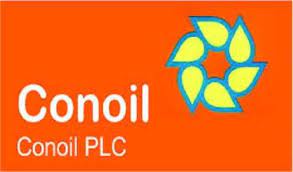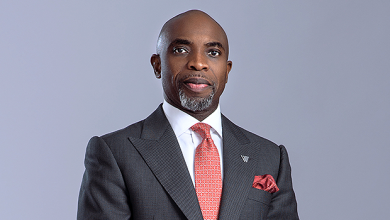Conoil Plc Q1 2021 Results: Top-line Squeeze and Bottom-line Growth

Conoil Plc‘s first quarter (Q1) 2021 unaudited results showed declines in the company’s top line items against over 60% growth in the company’s bottom-line. Notably, the company’s revenue dipped by -13.24% Y-o-Y in Q1 2021 showing a sustained fall in revenue following the global pandemic in 2020. However, there was an increase in profit before tax of +62.8% Y-o-Y in Q1 2021 despite the double-digit drop in PBT through the four quarters of 2020.
The downstream oil marketer’s total asset saw an increase of +8.57% Y-o-Y from N48.86bn in Q1 2020 to N53.05bn in Q1 2021.
Key Highlights
- The company’s total revenue fell by -13.24% Y-o-Y from
N38.14bnin Q1 2020 toN33.09bn in Q1 2021. - Cost of sales (CoS) also dipped by -12.92% Y-on-Y from
N35.29bn in Q1 2020 toN30.73bn in Q1 2021. - Gross profit slumped by -17.25% Y-o-Y to
N2.36bn in Q1 2021 fromN2.85bn in Q1 2020 motivated by the decrease in cost. - Operating income dropped by -107.283% Y-o-Y from
N89.28m in Q1 2020 toN43.1m in Q1 2021. - Finance cost slid by -85.78% Y-o-Y from
N388.69m in Q1 2020 toN55.24m in Q1 2021. - Profit before tax surged by +62.8% Y-o-Y from
N382.92m in Q1 2020 toN623.43bn in Q1 2021. - Income tax rose by +62.81% Y-o-Y from
N122.53m in Q1 2020 toN199.49m in Q1 2021. - Profit after tax increased by +62.81% Y-o-Y to
N423.93m in Q1 2021 fromN260.382m in Q1 2020. - The total assets went up by +8.57% Y-o-Y to
N53.05bn in Q1 2021 fromN48.86bn in Q1 2020. - Earnings per share also rose by +60.5% to
N61 Y-o-Y in Q1 2021 fromN38 in Q2 2020.
Price & Volume Movement- Stable Prices but Erratic Volumes
Conoil’s share price was stable at the beginning of Q4 2020. It ended the first month of Q4 2020 with a sharp increase in price and rose further to reach a tipping point at about N20 per share between November 2020 and February 2021. The stability and downward price reversal could be attributed to the relative peace in the country following the October EndSARS protests that restricted movement in parts of the country. Subsequently, the stock’s price declined stepwise in the latter part of Q1 2021 to stabilise in April 2021 as investors waited for the company’s financial reports. The downstream oil retailers price has since risen year-to-date following its profitability numbers in Q1 2021.
In terms of volume, Conoil Plc began Q4 2020 with low traded volumes before an upward spike in late October 2020. The company ended the quarter with the lowest volume as prices were stable and investors were neither neutral about price direction. However, traded volumes fluctuated through Q1 2021 with a bearish outlook. From the end of Q1 2021, the company’s shares has sustained low traded volumes (See chart 1 below).
Profitability-Topline Dip and Bottomline Growth
Conoil segments its products into three primary categories: white products, lubricants, and liquefied petroleum gas (LPG). The white products are the sale of Premium Motor Spirit (PMS), Dual Purpose Kerosene (DPK), Aviation Turbine Kerosene (ATK), Automotive Gasoline/grease Oil (AGO), and Low-pour Fuel Oil (LPFO). Products under lubricants are lubricants transport, Process Oil, Lubricants industrial, Greases, and Bitumen. LPG products are Bulk and Packed LPG, cylinders, and valves.
The company’s revenue fell by -13.24% Y-o-Y from N38.14bn in Q1 2020 to N33.09bn in Q1 2021 falling from its record six year high The firms revenue was basically the proceeds of petroleum products sales. White products accounted for 94% of the revenue, lubricants accounted for 6% while LPG revenue was nil in Q1 2021.
The company’s profit before tax rose by +62.81% Y-o-Y from N382.92m in Q1 2020 to N623.43m in Q1 2021 rising to an all-time seven year high driven by a significant reduction in finance costs by -85.78% Y-o-Y in Q1 2021 and a marginal drop in distribution and administrative expenses (See chart 3 below).
Asset Quality Squeeze
Current Ratio
The company’s Q1 2021 current ratio stood at 1.51, representing a -19.35% Y-0-Y fall from 1.87 in Q1 2020 t0 1.51 in Q1 2021 The decline nothwithstanding, the oil marketer had fairly strong working capital in Q1 2021 as its current assets outweighed current liabiities.
Liquidity Ratio
Conoil’s liquidity ratio for Q1 2021 saw a notable drop from 13.68% in Q1 2020 to 8.98% in Q1 2021, the lowest in six years. The Q1 2021 liquidity ratio showed that oil retailer struggled with cash and near cash assets in the quarter. The trend line shows a deterioration in its liquidity situation in the last six years
Acid-Test Ratio
The Acid test ratio, which is a stricter measure of liquidity, for Q1 2021 saw a slight increase of +1.31% to 1.23 from 1.21 in Q1 2020 Though the company was able to drag down its current liabilities, its stock of inventories did not witness a corresponding decline.
Leverage Ratio
The company’s leverage ratio saw a decrease from 43.24% in Q1 2020 to 19.66% in Q1 2021 A breakdown of the ratio showed that Conoil’s total debt fell by -54.04% Y-o-Y while equity grew by +1.09% Y-o-Y from Q1 2020 to Q1 2021.
What Lies Ahead
Many companies started the year with forecasts and optimism in their top and bottom-line growth of income statement. Conoil seems to still be leaning on the impact of Covid-19 pandemic as justification to advance without definite targets. The same issues that drove its operations in FY 2020 also drove its in Q1 2021 and it seems the company will maintain it further into 2021. Furthermore, the company seems to have a track record of late filing since 2017.
More worrisome is that fact that the company noted in its FY 2020 and Q1 2021 reports that a court judgement’s claim against it, to the tune of N4.3billion, has been captured in both financial reports. Investors may be seeking for more explanation.
Also, analysis of the company’s bottom-line profits showed it came through the decline in finance cost which was solely incurred on interests on bank overdraft. The company seems to have decided to cut back on its bank overdrafts. However, over a thousand percent increase in bank overdraft between December 2020 and March 2021 could raise further concern for investors as the company’s leverage position continues to be a sticky point amongst analysts.



